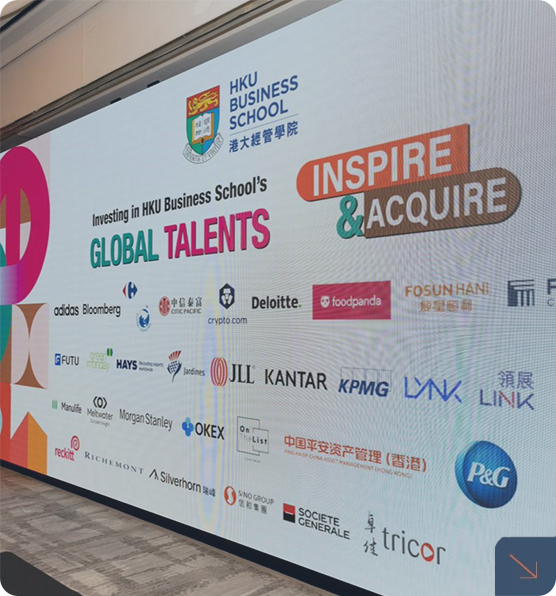
Innovation Strategy Common Ground—from Poverty Alleviation to International Web3 Centre
Professor Joseph Chan
12 May 2025
Hong Kong has long recorded successful performance in its four pillar industries, comprising trading and logistics, financial services, professional and producer services, and tourism. According to research by the Hong Kong SAR Government, they contributed close to 60% of the Gross Domestic Product (GDP) and almost half of the total employment before COVID 19. However, all four of these pillars have experienced a decline in their respective areas as a result of the rapid changes in market needs and user behaviour, regional and global competition, the development of new value chains, the impact of advanced technologies, and changes in the geopolitical environment. To address such challenges, “innovation” has been introduced to tackle these pain-points of Hong Kong. The question is how we should develop innovation strategies instead of coming up with ideas just for the sake of “innovation”. This article will discuss how innovation strategy can be approached from the perspective of poverty alleviation and how the Web3 industry may develop―both topics likely to shed light on how best to chart Hong Kong’s future course of development.
The Chief Executive announced in the 2022 Policy Address the restructuring of the Commission on Poverty to study targeted poverty alleviation for groups in need. In his 2024 Policy Address, the focus was on the following three areas: sub-divided flats, single-parent families, and the elderly. No doubt, these are key issues of concern in the wider community, but we can look back at the journey the Mainland has taken in the past two decades and see how innovation has played a pivotal part in the journey―from the “targeted poverty alleviation” strategy introduced in 2013 to the “rural revitalization” strategy in 2021. Our team at the University of Hong Kong has recently published the book, Poverty Alleviation Case Analysis in China―Poverty Alleviation Best Practices via Practices and SDG Strategies, with International Poverty Reduction Centre in China (IPRCC), with the support of the Bill & Melinda Gates Foundation. Previously under National Bureau of Rural Revitalization, the IPRCC now operates under the Ministry of Agriculture and Rural Affairs. By analysing different strategies implemented to address specific key pain points in focal regions and villages, via the effort and collaboration of key stakeholders, we can gain an overview of how the United Nations Sustainable Development Goals (SDGs) can be achieved within the framework of Chinese national policy.
The concept development of “poverty alleviation” starts with “who should help”, “who should be helped”, “how to help”, and “how to move on”. From the microscopic perspective, it involves details of the focal poverty conditions, including understanding the root causes of the users and regional pain points, along with their corresponding solutions. From the macroscopic perspective, it involves deploying a wider range of available resources to further long-term economic and industrial development. As the Chinese saying goes, “Giving someone fish is not as good as teaching someone to fish.” For example, in areas where low education levels among the youth compromise local industrial development, effective talent-cultivation programmes are established, with enterprises providing job-pairing assistance and the government organizing further training workshops. In remote areas, apart from infrastructure development and supply-chain establishment, comprehensive solutions combined with enhancement of cultural confidence to coordinate primary, secondary, and tertiary industries are also provided. In addition, creative solutions like wealth-creation evening schools supported by TV broadcasts are also introduced, with impact amplified by various online and offline supplementary activities. These collective efforts have enabled China to achieve the first target of the United Nation 2030 Agenda for Sustainable Development―10 years ahead of schedule upon complete eradication of extreme poverty in the country.
China’s achievements and related experience in poverty alleviation demonstrate that the key to success lies in an in-depth understanding of the pain points and core problems, coupled with deployment of available resources through coordinated efforts among local governments, nationwide enterprises, and government departments. The core factors are “in-depth understanding”, “coordinated efforts”, and “creative confidence”. This approach mirrors the principles of Design Thinking in problem-solving, which emphasizes empathy, interdisciplinary innovation, and iterative optimization. Since the launch of the “Unleash Hong Kong” initiative in 2018, the Hong Kong SAR Government has been supporting the application of Design Thinking and related training activities. This approach has proven effective in poverty alleviation cases. Further discussion is required to review whether this innovation strategy has been carried out thoroughly and whether its implementation is in-depth and creative enough.
A similar innovation strategy can be applied to the development of Web3 in Hong Kong.
Over the past decade, the decentralized blockchain protocol Web3 has brought about a digital revolution in the financial sector. While the financial market has experienced roller-coaster rides because of bitcoin and cryptocurrency, the resulting transformation extends beyond the speculation market. An even greater impact is seen in digital asset management, cross-border transactions, and the updating of financial, monetary, and securities policies. The Hong Kong Government aims to become an international Web3 hub and create a buzz in global financial markets to attract investors and capital. However, under the Design Thinking framework, it is worth considering how we can formulate an innovative strategy to fully align with the Policy Statement on the Development of Virtual Assets (VAs) in Hong Kong released in October 2022 and the vision of the Task Force on Promoting Web3 Development established in June 2023.
The general view is that 2025 will be a pivotal year for Real World Assets (RWA), a product generated by Web3 technology. RWAs are tangible assets like commodities or equities that have value in the real world. These assets can be divided through tokenization into smaller, more manageable units, broadening the investor base and enhancing market liquidity. Research has shown that financial institutions like JP Morgan and Goldman Sachs are actively promoting asset tokenization, which is estimated to have a market value of over US$10 trillion, and holds the potential to significantly raise market efficiency and liquidity.
Hong Kong’s robust financial system, strategic geographical position connecting Mainland China with overseas markets, and gradually opening regulatory environment provide a solid foundation for Web3 development and asset tokenization. Beyond real estate and bulk commodities, this state-of-the-art fintech tool is expanding into niche markets such as carbon credits, green finance, luxury collectibles, and intellectual property. It is encouraging that the SAR Government has launched a sandbox to facilitate experimentation with new ideas and has rolled out consultations and white papers on the topic. Despite challenges from regulatory fragmentation, custody risks, and limited secondary market liquidity, in order to embrace this financial technology and its ecosystem, we can start with asking the following questions: What assets are suitable for tokenization? Where do they come from? Who are the buyers? How to make good investments in the Web3 environment? And how to exit the market? The answers to these questions will guide Hong Kong on its path to becoming an International Web3 Centre.
In an increasingly complex geopolitical environment, China faces its own economic challenges. As the bridge between East and West, Hong Kong plays an important role in navigating an environment currently fraught with challenges and competition. It is therefore absolutely crucial that various sectors adopt an innovative strategy.
We can start with the three key ideas mentioned above: “in-depth understanding”, “coordinated efforts”, and “creative confidence”.







